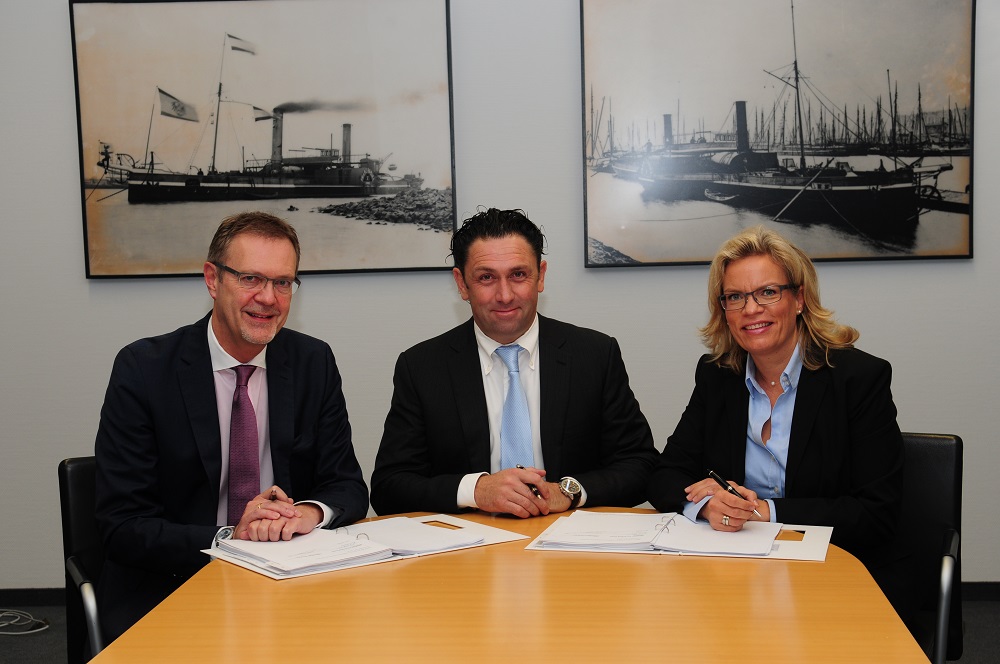IMPERIAL replaces two gas tankers
16th October 2015

IMPERIAL Logistics International has ordered two new gas tankers suitable for travelling on canals from the Dutch shipbuilder VEKA Group in Werkendam. They will be able to transport liquefied petroleum gas (LPG) and other gaseous products liquefied under pressure. The relevant construction agreements were signed at IMPERIAL Logistics International company headquarters in Duisburg on 13 October 2015. Anke Bestmann, Managing Director of IMPERIAL Gas Barging, says: The two new gas tankers set new standards in terms of energy efficiency and carrying capacity. In operation, the new gas tankers are much more economical than the previous units.
As a specialized shipbuilder with many years of experience, we can meet the technical requirements of our customers reliably in terms of safety and cost-effectiveness, says Peter Versluis, owner of VEKA Group.
The shipyard is due to deliver the vessels in the second half of 2016. Both new units will replace older gas tankers in the fleet, which will then be removed from service. The new gas tankers will be used by IMPERIAL Gas Barging GmbH. It currently operates 17 of these vessels
Both units will be equipped with an innovative rudder propeller drive system. This dual-power system requires less fuel and less maintenance than older power units. The main engines operating data like fuel consumption, position, speed, waste gas temperature, load and rpm are all transferred to the shipping companys control centre online. The ships hulls are reinforced with enhanced collision protection what is known as a Schelde lining.
Technical specifications:
- Length: 110 m
- Width: 11.45 m
- Cargo tanks: 6
- Total volume of the cargo tanks: approx. 2,850 m3
- Discharging pumps: 6 deep well pumps with a total discharging rate of 350 m3/hour
- Wheelhouse: single unit, fully retractable in the living quarters
- Other innovations: heater batteries for heating the living quarters and technical facilities when in port

